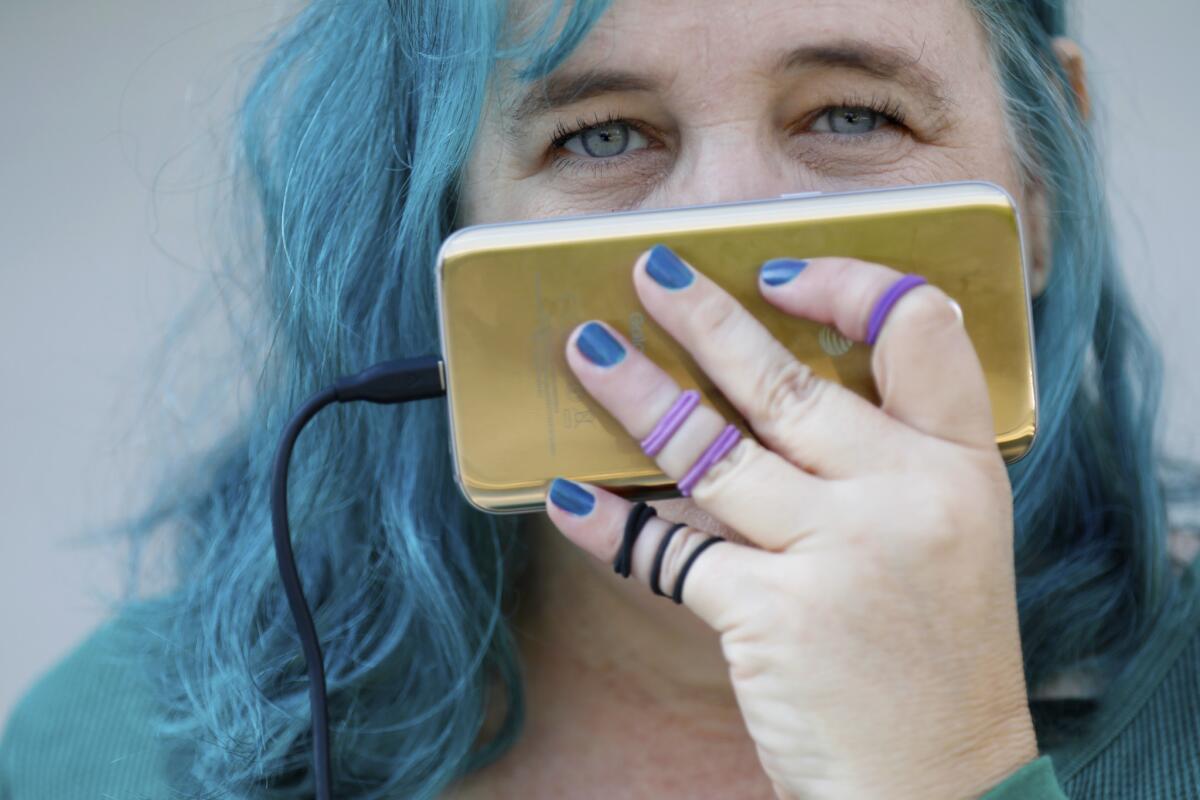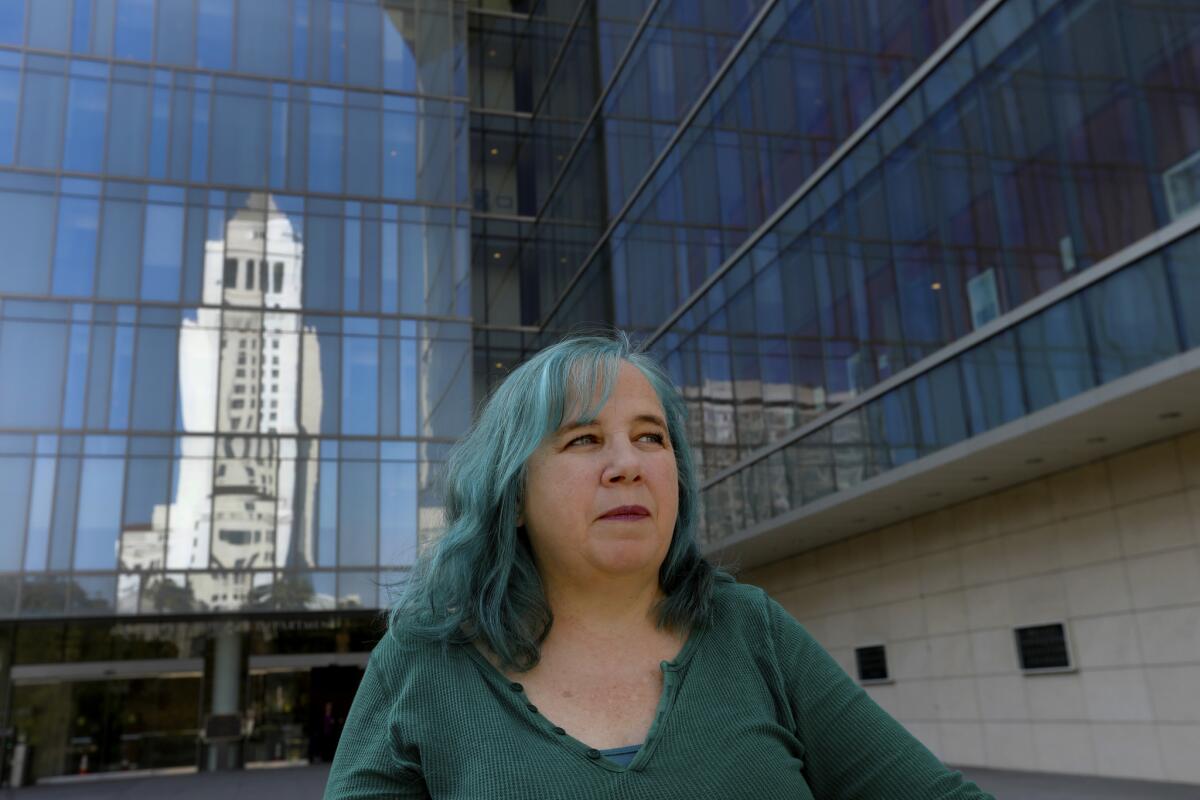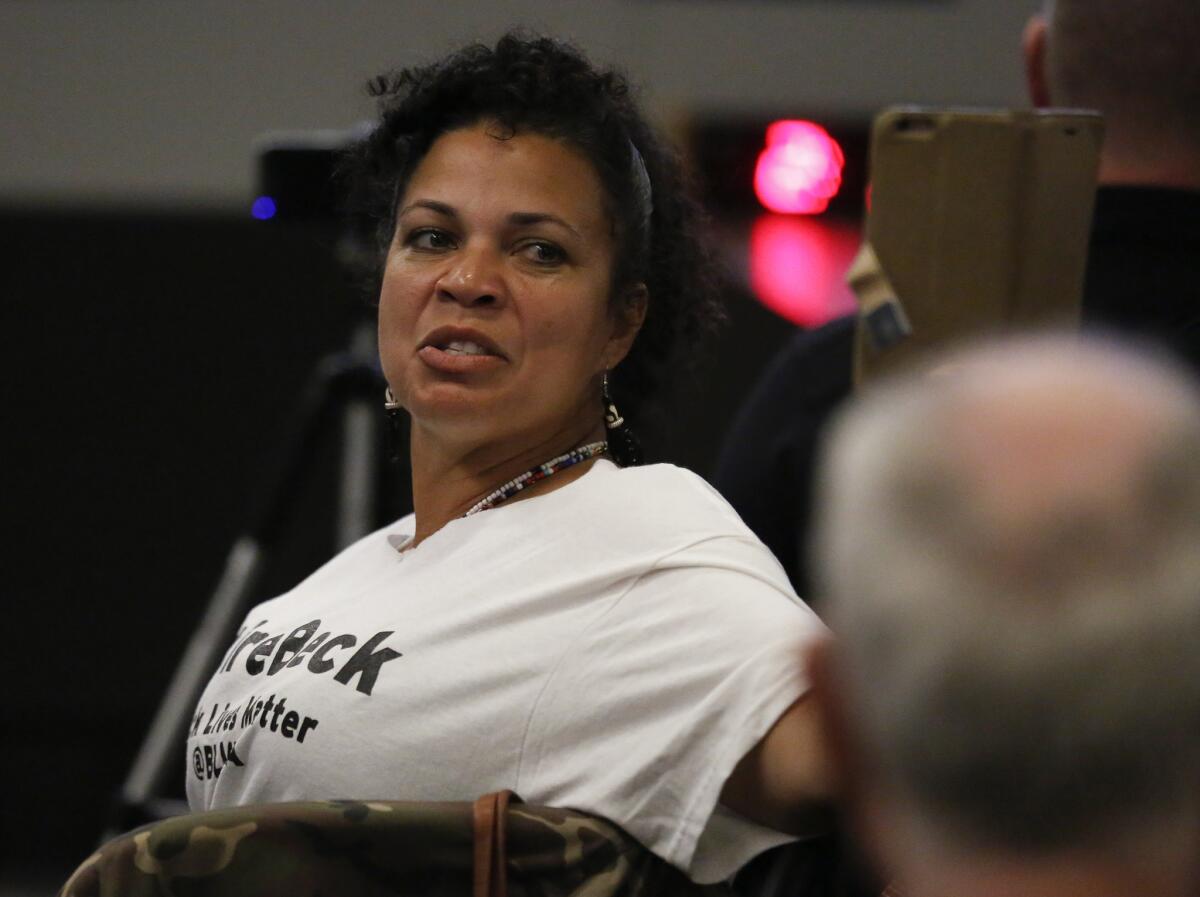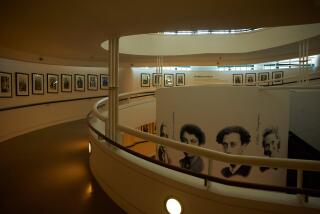Live streamer Patti Beers was banned from Twitter even as she’s turning the filmmaking of resistance on its head

The videos by live streamer Patti Beers vary in length from seconds to hours. Played back to back, however, they become one endless movie documenting political resistance in Los Angeles. She may be L.A.’s most independent filmmaker, and she’s part of a movement reinventing the political documentary in real time.
Beers started live streaming at City Hall in Los Angeles during Occupy L.A., which began in 2011. “I went 18 hours on May Day, 2012,” she says. She’s since streamed thousands of hours and seen her social media reach expand to what she says is “about 5 million people in a variety of accounts.” More than a job, it’s a personal mission.
“I felt like there was a perspective that wasn’t being shown,” says Beers, whose social media handle is PM Beers. Her subject is resistance, downtown Los Angeles her canvas. Her defining talent is relentlessness.
This trait is evident at a recent contentious meeting of the Los Angeles Police Commission, the weekly gathering that has become Beers’ second home. Steady in the tense room where members of the Los Angeles chapter of Black Lives Matter regularly challenge the commissioners, Beers holds two Android cellphones in one hand as she pans between the officials and those making public comment. Wearing a T-shirt and well-worn jeans, her hair is loosely braided and faded pink bangs frame her face as she live streams the political theater. Local characters, including a man who sometimes dresses as Batman, lash out at the commissioners on the dais.

Live streaming is new territory for Hollywood, but not new for us....It’s a viable reality for the future of filmmaking
— Linda Nelson, co-owner of Indie Rights, a film distribution company
Beers is treasured by many, though not all.
“I’ve been accused of everything,” Beers says with a quiet laugh. “I’m working for the state. I’m a snitch. I’m a provocateur.” At protests, she’s been beaten and bruised, shunned and embraced and also arrested. Many local activists see her has a valuable community resource.
“Patti’s live-streaming tells our story,” says Melina Abdullah, professor and chair of Pan-African Studies at Cal State L.A., and a founding member of Black Lives Matter’s L.A. chapter. “She documents so much of what we do and that often serves as a counter to the stories that they — police, politicians, and those with traditional power — seek to tell about us.”
More than just swaying public sentiment, Abdullah says, “those videos are essential when we are criminalized by the system. And because of this, Patti is also targeted. They put her on social media ‘time out’ and even attempt to prosecute her. She never lets that stop her. She continues to show up. She continues to put herself on the line.”
Vanished were Beers’ personal accounts and the 30 accounts that she worked with. She was a ghost on Twitter.
Despite her risk-taking, it was still a surprise to some when Beers found her personal Twitter account and others she managed removed in an Oct. 11 Twitter purge that was compared to the ban on the accounts of right-wing activist Alex Jones and his InfoWars website. Along with Beers, an estimated 80 activists associated with the Occupy movement found their accounts suspended on the same day. On Nov. 22, Beers was permanently banned from Twitter. A terse, impersonal email Beers received said, “replies and new appeals for this account will not be monitored.” Twitter declined to comment to The Times “for privacy and security reasons.”
Breaking the mold
Though she’s been paid to write, photograph and stream by various websites, including Anti-Media — an independent news site that emerged from the ashes of Occupy L.A. — the fees are negligible at best and don’t begin to cover her expenses as the single mother of a son with high-functioning autism.
“Patti’s poor, but somehow she takes three buses to get to the action,” says Scott Ford, an entrepreneur, creative director and antiwar activist, who began streaming protests in 2006. “She has nothing, but she’s been out here doing this for years after others have burnt out.”

Patti’s live-streaming tells our story.
— Melina Abdullah, Cal State L.A. Pan-African Studies chair and founding member of Black Lives Matter’s L.A. chapter
Beers came on the scene at a critical time in 2012, when sweeping transformation seemed possible. Her shaky hand and soft, airy voice could escalate to a shrill scream without warning when police showed up in riot gear and made arrests during Occupy L.A.
Her mentor, original Occupy Los Angeles live streamer Sky Adams (a.k.a. Cross_X_Bones), taught Beers to live stream one night at the downtown gay bar Jalisco.
“She took it and ran with it and innovated on the ground after that,” says Adams. “She’s absolutely fearless getting in and getting the honest story.”
Most people run from gunshots, flash-bang grenades, sirens and tear gas. But Beers, almost at peace in fields of chaos and grief, seems drawn to conflict. “To run toward it and get what’s happening requires a lot of bravery,” Adams says. “And to tell the story requires a lot of integrity.”
Live-streaming is the filmmaking of resistance. And for the person behind the camera, somewhere between a movement’s activists and the mainstream media, Beers and others who appear with their cellphones at protests around the country stand quietly alone, documenting the action.
As Beers captures the cinema of terror you can almost feel her isolation in every frame of the emotionally toxic environments she films. At the same time, she seems somehow immune to harm as she and her fellow live streamers break the mold of traditional documentary video.
“Live streaming is new territory for Hollywood, but not new for us,” Linda Nelson, downtown resident and co-owner of Indie Rights, a film distribution company that created a new business model that gives filmmakers 80% of the gross for their movies. “We’ve been looking at streaming series and live-streaming in general as a viable reality for the future of filmmaking. As the technology develops, the future of live-streaming, of what defines a movie is all up for grabs.”
Twitter trouble
Partly acting out of childhood wounds and unresolved adolescent trauma, her videos can be seen as a movie of her healing. It’s an inspirational movie.
Beers’ roots are in Oxnard, where her mother worked as a teacher at Camarillo State hospital, “until Reagan made the patients move into community care,” she says, “which failed and contributed to the homeless crisis.” Her father worked in the aerospace industry, but his work was not consistent. “There were good times and bad,” she says.
At her peak, Beers was tweeting for several clients, including Anti-Media. “I did their Twitter and tweeted in a bunch of different accounts for them.” She also worked for Global Revolution, a large collective that sprang from Occupy Wall Street. “We’d worked collaboratively in teams.”
Beers and others would log into a group account on TweetDeck, an application for the management of Twitter accounts. “We’d have columns of different Twitter accounts in that TweetDeck. For example, when Gaza was under attack in 2014, we had people who had contact with people on the ground in Palestine, and they would know who was tweeting the truth.”
She’d go in each morning and see what needed to be covered, then go through the tweets and “sort of curate them and retweet to affect a narrative … of what’s really happening on the ground there,” she says. “We did the same with Ferguson and different uprisings through the years. I was reaching over 3 million people then.” “P.M. Beers” was having an impact.
But that all changed on Oct. 11. Beers was at a volunteer job she has in the cannabis industry when the Twitter purge happened. “It was 4 o’clock,” she says. “I was getting all kinds of messages telling me that my accounts were gone.” Vanished were Beers’ personal accounts and the 30 accounts that she worked with. She was a ghost on Twitter.
“Global Revolution, an anarchic principled media collective from Occupy was also targeted by Twitter,” Beers says. That organization would identify people who were tweeting about a particular political action or protest and retweet them — “getting the news from the source, the people involved in the action.” It was one of the largest accounts that was suspended — “possibly because of my involvement with them,” she says with a shudder.
“Now I can’t tweet at all and I’m afraid to do Twitter work from home because I don’t want anyone else’s accounts to be suspended because of their association with me.”
Beers also worked with another live streamer called Revolution Z. “I would do a lot of streamer support for him,” she says. But “if I would retweet him, and collaborate with other accounts and all of the accounts that would retweet him, he would get reported to Twitter.”
Her trouble with Twitter started happening around the time of the Charlottesville, Va., protests in 2014 after the police killing of Mike Brown. She says Twitter targeted social interactions that involved large protests opposed to white supremacists. “Whenever we’d retweet Revolution Z ‘s live streams everyone who retweeted would get reported to Twitter.” Those accounts were suspended but then restored after appeals.
There was little coverage when the 80 activists associated with Occupy — with a collected following of 5 million people — had their accounts suspended. Rolling Stone journalist Matt Taibbi got interested when Twitter took down Occupy London without explanation earlier this year but eventually restored the accounts. “The distinction with these ... is that they involve pretty demonstrably real people,” Taibbi says.
“All this was happening in the wake of the Alex Jones thing,” Taibbi adds. “People were very much cheering the idea that the platform should be taking down bad actors.” But Taibbi was also starting to notice that a lot of the sites and accounts that were taken down were of an opposite political persuasion of Jones. “I can’t make any definite conclusions, but it’s demonstrably true that a lot of them have Occupy ties.”
Before Beers and Jones got kicked off Twitter, the original controversy involving Facebook was focused on fake news accounts and foreign election interference. “And we’re now removing real domestic accounts and as far as I can tell, there are no allegations that any of these accounts are connected to foreigners,” Taibbi says.
“If you look at the history of all these big platforms around the world, you’ll find that they often cooperate with local governments. Sometimes they’ll receive suggestions about removing sites. … It’s a little bit mysterious, how they’re picking people to remove … it’s certainly not a good thing.”
Beers stands quietly outside LAPD headquarters in the midday sun in downtown Los Angeles just after the police commission meeting. She has been censored by Twitter. She’s looking for a platform, and she’s looking for justice. But first she has three buses to catch to get home.
ALSO
The best of times, the worst of times: art in the age of rising white supremacy
‘The Art of Protest’ at Church of the Epiphany: Eastside landmark is a sanctuary for social justice
See the most-read stories in Entertainment this hour »
On Twitter: @samslovick
More to Read
The biggest entertainment stories
Get our big stories about Hollywood, film, television, music, arts, culture and more right in your inbox as soon as they publish.
You may occasionally receive promotional content from the Los Angeles Times.






